
SakeVisual is back with another translated entry into the Jisei series brought to you by publisher Ratalaika Games! If you missed the first game in the series, it’s worth your time, even if it’s a bit rough around the edges. Don’t believe me? Check out our review (here) from 2020! This time around, we’re back with the same core characters as Jisei in a direct continuation of the plot from the first game. In fact, it literally takes place the day after the last game!
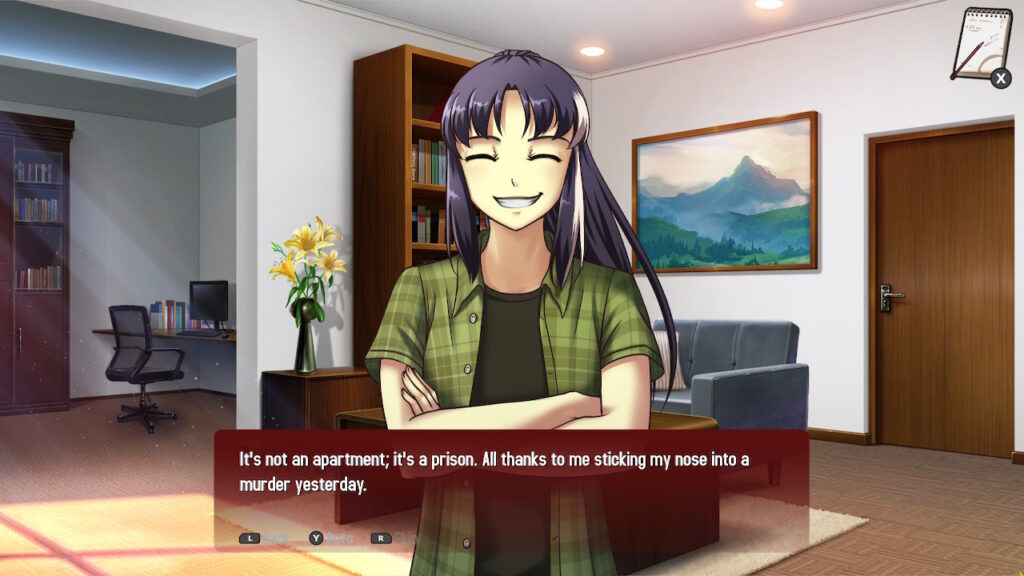
Fortunately, our protagonist has a name of sorts this time around. Well, a nickname at least. You play Kangai, the teenager who can see the deaths of the people whose dead bodies he touches. After solving the murder from Jisei, Kangai ends up co-opted into joining a supernatural teen team (yes, really) which is oddly supervised by Detective Gurski from the first game. Gurski was a bit odd in the first game but his dialogue has tightened down as he’s been made a core character in the series. Naoki is back as well, now joined by his sister Aki, as well as Li Mei a young girl who shares nothing of herself. Each of these characters has a supernatural power that is different from Kangai’s. They form a government sanctioned black ops team, which is kind of ridiculous.
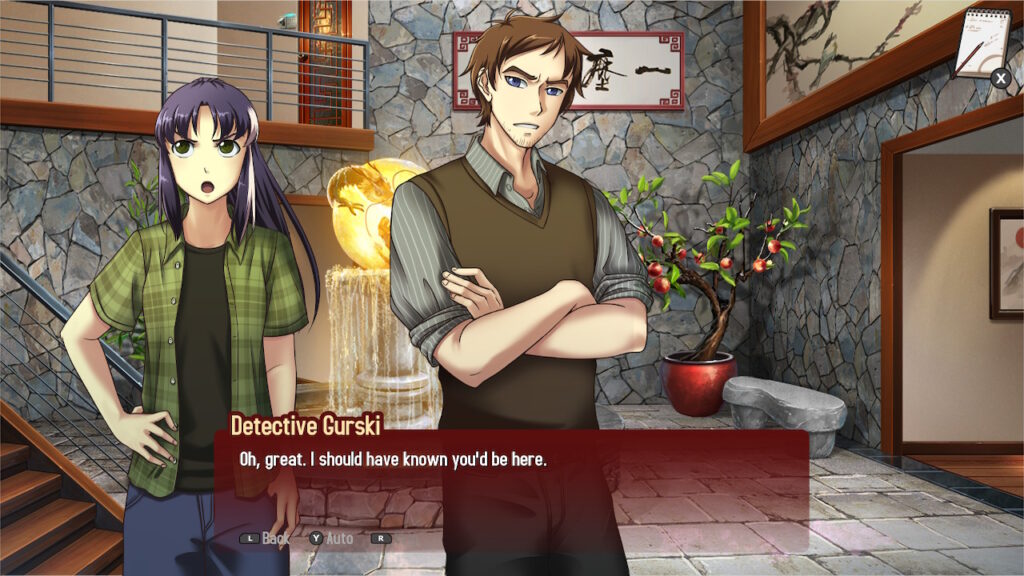
However, a silly premise doesn’t ruin the game and much like Jisei, it’s the overall power of the narrative, scripting, and depth of dialogue that makes a nonsense backstory work like a well-oiled machine. Death seems to follow Kangai around and with a crew of newly-minted coworkers so it’s time to get to work once again.
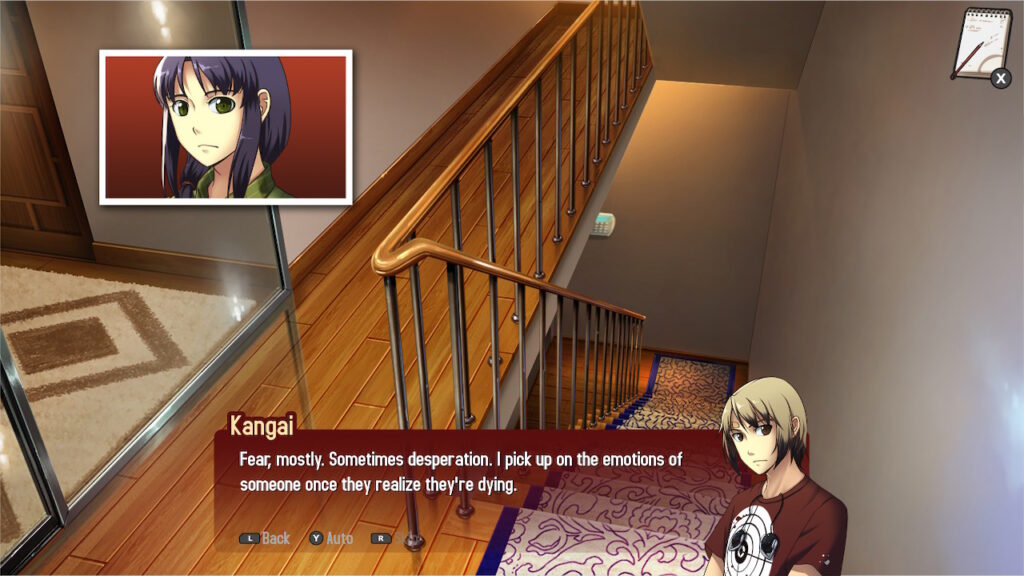
Unlike the first game, Kansei is a bit of a slow start. The expectation here is that you’ve played the first game already, you’re familiar with the characters, and you’ve come back for a second helping. That’s all well and good but unfortunately, it also makes for an incredibly slow start to what turns out to be a rather short game overall. You’re looking at a game that’s only going to take two or three hours to begin with, so starting out slow is kind of unforgivable. That’s not to say the game isn’t fun or good, but simply that the early pacing leaves something to be desired.

Kansei is fairly well-designed on the Switch, with full touch screen integration. One of the chief complaints about the game on other platforms was the awkward navigation but on the Switch in undocked mode, it’s easy to just tap what you want to look at or where you want to go. If you’re playing on a console however, the cursor is slow and it’s a hassle to click on the move button on the top left, then move the cursor to an arrow to select where you want to go, then move the cursor to the next spot or person you need to interact with. A streamlined touchscreen experience becomes an irritating slog, even with a game this short. Having the option to skip from point to point, turning the move and examine buttons into mapped buttons on the underutilized controller, and a few other quality of life choices would have vastly streamlined Kansei and made it much more player friendly. Unfortunately, that didn’t happen here. It’s obvious that the game was originally designed for a mouse and keyboard, so if that’s an option for you, definitely consider it.
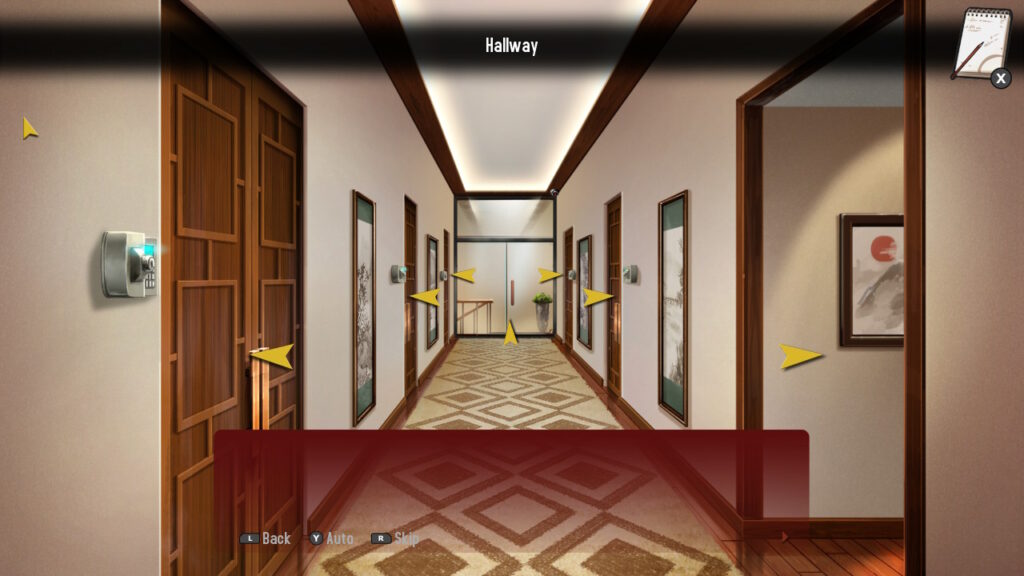
The quality of life controls have been maintained from the first game with rewind buttons, fast forward options, multiple save files and the whole shebang. Load times are essentially non-existent and the whole game is perfectly optimized for the Switch. It’s a nicely designed little UI, as long as you’re not using a controller to play. Regardless of the controls (use the touchscreen…just do it), Kansei is fairly compelling once things get moving. There’s a fair bit going on behind the scenes with the characters, the suspects are interesting, and what you think is happening is a constant ping pong match as you learn detail after detail that leaves your theories spinning back and forth with each additional piece of information. It’s a fun little story and you’ll definitely be kept guessing.
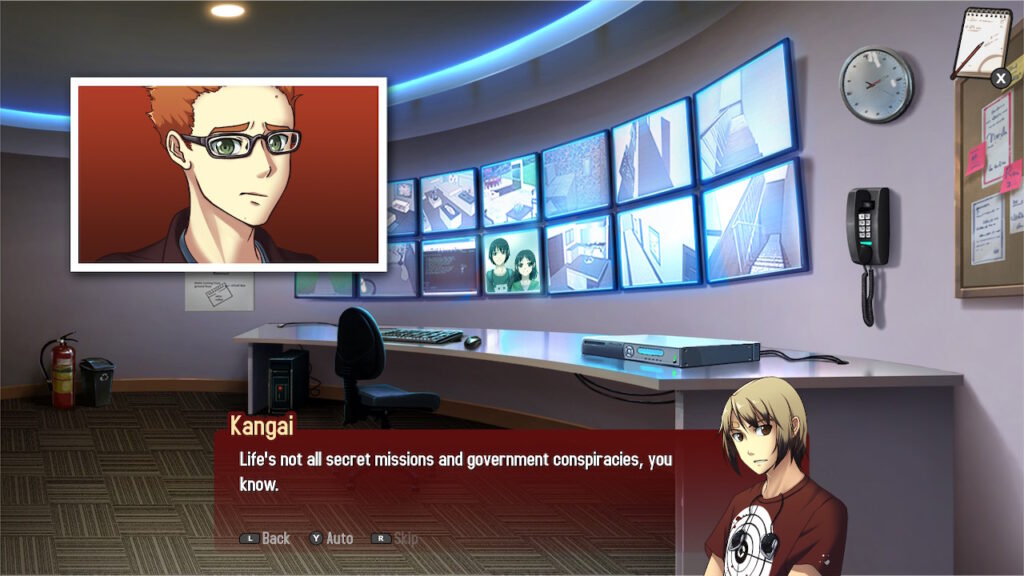
While there’s a solid opening song, Kansei feels more like you paused a movie midway through, then come back two years later and picked up right where you left off. It’s definitely a game that feels like the middle of a story and that makes sense since this is actually a finished trilogy. Realistically, they should have all been combined into one game, but the bite sized chunks are easy to pick up and play for casual gamers, so no complaints!
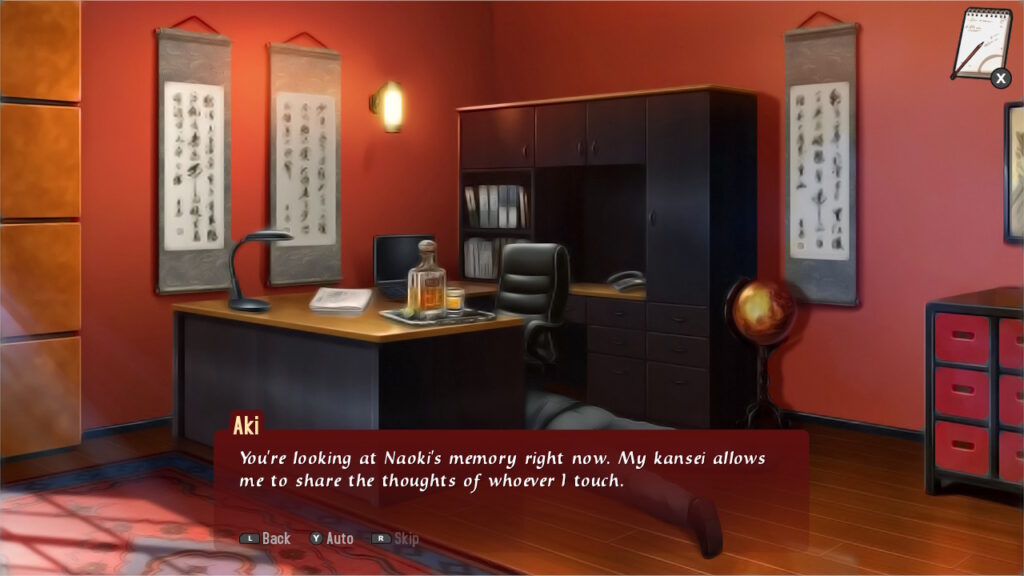
Kansai looks even better than Jisei did. It definitely has an indie vibe going and that hasn’t changed but there are some more animations thrown in, some more detailed backgrounds, and a bit more overall care taken. The visual polish on the artwork has really stepped up and it’s obvious that there was a larger budget to play with here. It’s a nice looking game for something this low-budget, and certainly better than other content at the same price point. The big surprise here is the audio though. Unlike Jisei, Kansai features full English voice work for all the characters except Kangai, which makes sense since you’re supposed to be Kangai. That’s not something you’d expect to see in an $8 game. On top of that, the voice work is surprisingly solid too. No weird squeakiness, no painfully rough acting, just we—scripted dialogue acted out in a realistic manner. It’s pretty fantastic, to be honest.

That’s not the only treat in store. Unlike the first game, Kansai features multiple endings….three of them. If you really want to find out everything you can, you’ll have to beat the first two endings to unlock the true ending! For that extra $3, it seems like SakeVisual addressed the replay value issue from the first game, at least to a degree. It’s not a massively branching game like The Letter (recently reviewed here), but you’re definitely getting a bit more bang for your buck on top of the quality of the game overall.
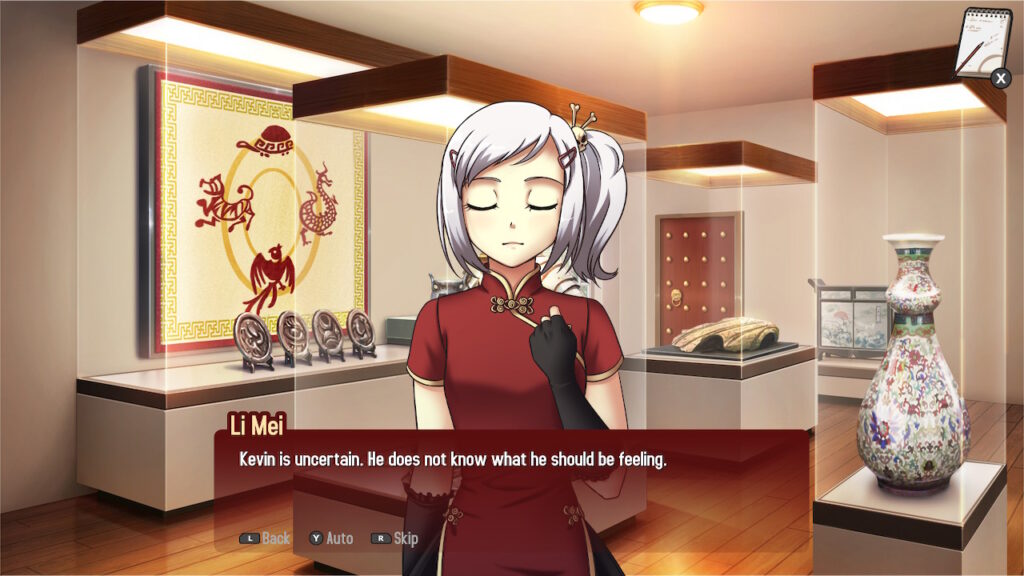
At this point, it’s probably a foregone conclusion that Yousei, the last game in the series will be coming to platforms courtesy of Ratalaika, making it absolutely worth your time to play Jisei and Kansei. If you haven’t played Jisei, you should really play it before diving in here, but Kansei is worth your time either way, and it won’t break the bank either. SakeVisual has done some excellent world building here and Kansei: The Second Turn HD takes the introduction that the first game gives and starts to flesh it out into a full-fledged universe. The only thing that’s left at this point is to wait for the series to conclude!
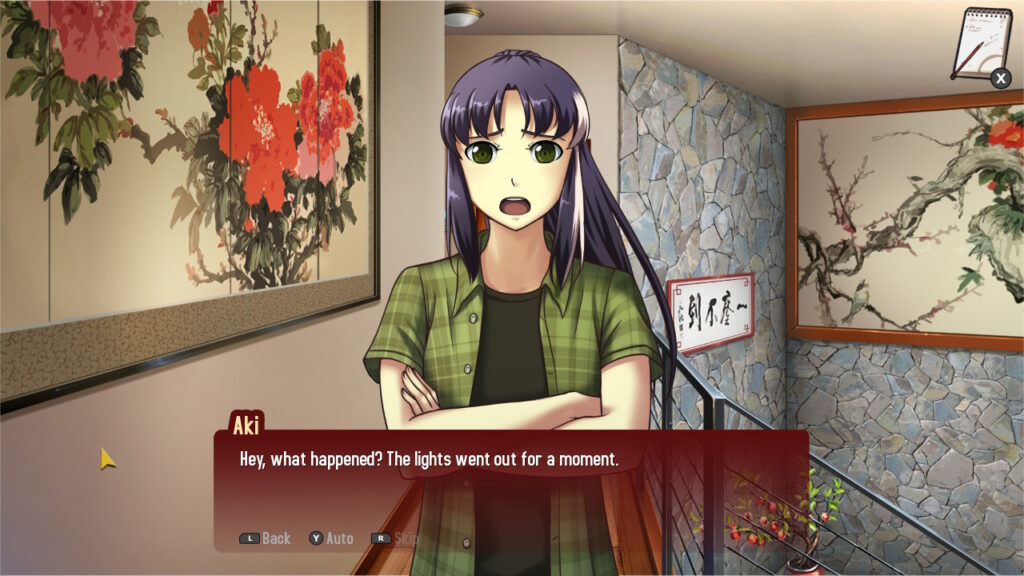
This review is based on a digital copy of Kansei: The Second Turn HD provided by the publisher. It was played on the Nintendo Switch in both docked and undocked modes and was noticeably more user friendly in undocked mode but played well in both. Kansei is also available on Xbox One/XSX, PS4/PS5, and PC on Steam.

